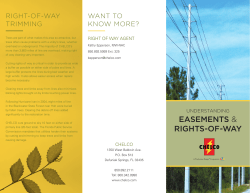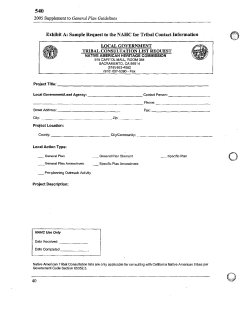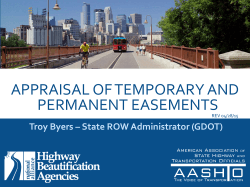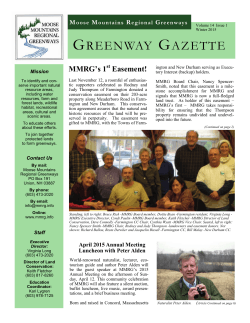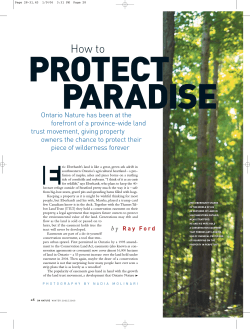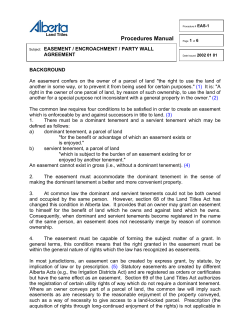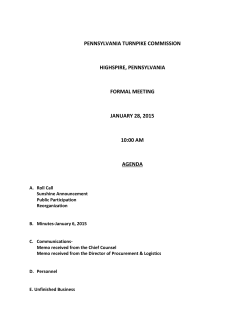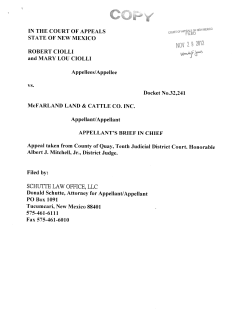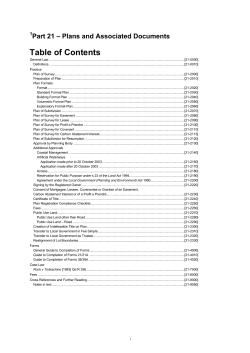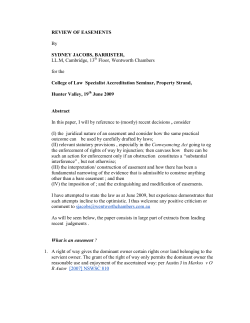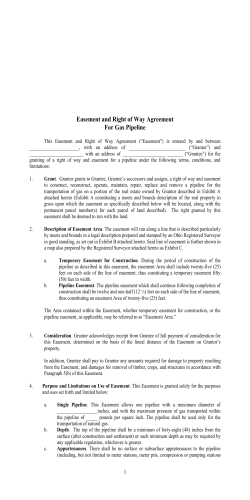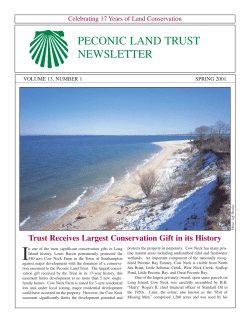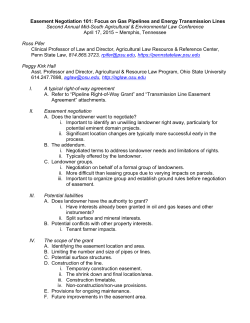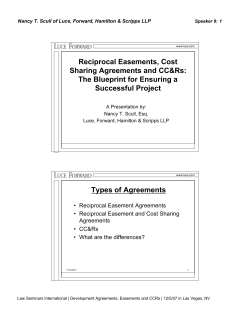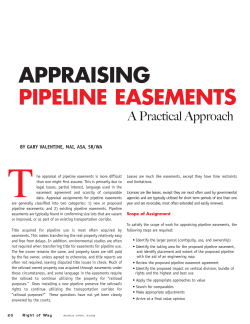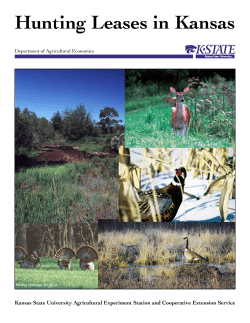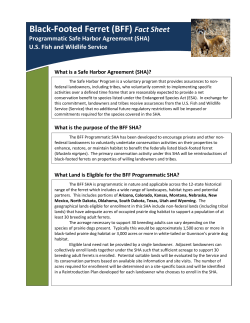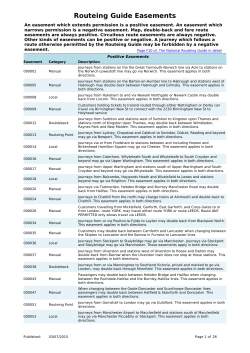
UNDERSTANDING EASEMENTS AND RIGHTS-OF-WAY
UNDERSTANDING EASEMENTS AND RIGHTS-OF-WAY When people talk about building new transmission lines, they often refer to an ‘easement’ or a ‘right-ofway’ (ROW).Although the terms often are used interchangeably, they are distinct concepts. What is an easement? An easement is a permanent right authorizing a person or party to use the land or property of another for a particular purpose. In this case, a utility acquires certain rights to build and maintain a transmission line. Landowners are paid a fair price for the easement and can continue to use the land for most purposes, although some restrictions are included in the agreement.The easement instrument is the legal document that must be signed by the landowner before the utility can proceed. What is a right-of-way? A right-of-way is the actual land area acquired for a specific purpose, such as a transmission line or roadway. What is the difference between an easement and a right-of-way? Simply put, an easement is a land right and a right-of-way is the physical land area upon which the facilities (transmission line, roadway, buildings, etc.) are located. How long does an easement last? Easements are perpetual and are not subject to termination or expiration. Once an easement is signed, it becomes part of the property record.The utility, the landowner who signed the easement and all future owners of the property are bound by the terms of the easement agreement.The utility can, at some point, choose to release the easement rights if it removes the transmission line and abandons the right-of-way. How are landowners paid for an easement? Landowners typically are given a one-time payment based on fair market value for easement rights to their land. Landowners can elect to spread the payment out over time. For instance, landowners can choose to receive installments with interest paid annually on the remaining balance.Traditionally, the easement payment is based on a percentage of the appraised land value.Also, of course, the majority of land still is usable, particularly in agricultural settings where farmers can continue to use the land for raising crops or as pasture. Landowners also are eligible for reasonable compensation for property damage that may occur when the transmission line is constructed and in the future during repair and maintenance, as described in the easement document. Who pays property taxes for the right-of-way on which the transmission line is constructed? The landowner continues to pay property taxes on the right-of-way, although some states, including Minnesota, provide landowners a property tax credit in proportion to the length of the transmission line that crosses their property. What easement rights will be needed for the construction of a power line? The Xcel Energy projects will require easements that allow for surveying, construction, operation and maintenance of a transmission line across a defined right-of-way located on the landowner’s property. These easements will include the right to clear, trim and remove vegetation and trees from within the right-of-way, as well as tall and dangerously leaning trees adjacent to the right-of-way that may threaten the line if they fall. What activities are allowed within the easement area? Land within the right-of-way may be used for any purpose that does not interfere with the construction, operation or maintenance of the transmission line. In agricultural areas, the land may be used for crop production and pasture. In areas where the land will be developed, streets, lawn extensions, underground utilities, curbs and gutters, etc., may cross the right-of-way with prior written permission from the utility. Why are there restrictions on the land? Providing electrical energy is an essential public service, and some restrictions are necessary within the right-of-way to maintain reliability. Utilities have determined that the best way to prevent outages is to restrict the placement of structures within the right-of-way. If a building or structure in the right-of-way caught fire, it could burn into the power line and take the line out of service for an extended time. Additionally, buildings or other structures in the right-of-way can hamper maintenance crews from accessing the line if an outage occurs. What are the main building and plant restrictions in the easement? Conditions will vary, but the primary building and planting restrictions within the right-of-way are in place to ensure that a utility has the necessary clearance for operation and maintenance, and to comply with the National Electrical Safety Code. Restrictions within the right-of-way strip prohibit constructing buildings and structures, storing flammable materials and planting tall-growing trees. Why doesn’t the utility just buy the land instead of negotiating an easement? Utilities’ main interest is in simply acquiring the rights to a piece of land in order to build and maintain a transmission line. Owning the land is not required to do this. Landowners, for the most part, prefer to retain ownership of the property so they can maintain better control over its use within the easement restrictions. Often, retaining ownership allows the landowner continued use of the property for things such as agricultural operations, yard extensions or open space, allowing the property to continue to contribute positively and productively to the owner and the public. Most adjacent uses pose no threat to the line and do not create a public hazard. Generally, how large is the area covered by an easement or a right-of-way? The voltage and the type of transmission structure being built determine the size of the right-of-way. For 345-kV lines, the typical right-of-way is up to 150 feet wide. What happens when the landowner and utility cannot agree on the easement or payment? If an agreement cannot be reached, a utility may pursue a state-governed process called condemnation, under which a judge and a panel of impartial individuals decide whether the easement is needed and its value.The condemnation process varies from state to state. In general, states establish strict procedures for determining the amount a landowner should be paid by a utility for acquiring a right for construction and maintenance of a transmission line.A government’s right to acquire – or authorize the acquisition of – private property for public use, with just compensation being given to the owner, is called eminent domain. In some states when a transmission line crosses a rural property, a landowner, under certain conditions, may request that the utility purchase the entire property. * This fact sheet is not a legal document. It is meant to provide general information about easements and rights-of-way. Individual state statutes differ and each utility has its own process. 1-800-328-8226 xcelenergy.com © 2007 Xcel Energy Inc. Xcel Energy is a registered trademark of Xcel Energy Inc. Northern States Power Company-Minnesota d/b/a Xcel Energy 07-09-030
© Copyright 2025
